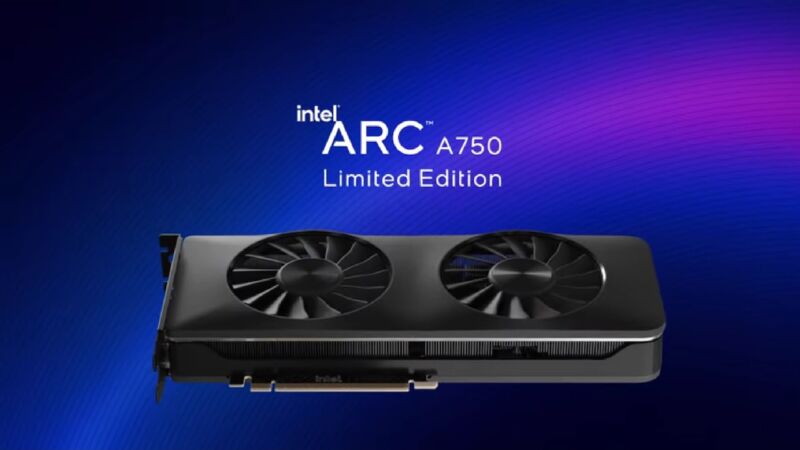
Intel still hasn't announced a release date for its Arc dedicated graphics cards, but the company has conducted a PR offensive over the last few weeks to set expectations and preview how the cards are stacking up. In a video and accompanying post today, company representatives Ryan Shrout and Tom Peterson compared the upcoming Arc A750 card to Nvidia's RTX 3060 in a few dozen DirectX12 and Vulkan games They demonstrated that the card is usually able to keep up with the most popular member of the RTX 3000 GPU family.
In a series of tests at 1080p and 1440p, Intel's tests show that the A750 usually comes within a few percent of the RTX 3060's performance, sometimes overperforming (Cyberpunk 2077, Fortnite, Microsoft Flight Simulator), sometimes underperforming (Assassin's Creed Valhalla, Deathloop), and sometimes roughly matching Nvidia's average frame rates (DOTA 2, Hitman 3, Death Stranding). Average FPS is just one way to measure game performance—crucially, Intel didn't provide any minimum or 1 percent low frame rates, which can have more of an impact on how smooth your game feels when you're playing it. But if you take these tests at face value, the Arc A750 does at least appear to be a viable midrange GPU competitor.
-
Intel ran tests in a series of DirectX12 games and compared their average FPS performance to the Nvidia RTX 3060.Intel
-
It also provided alternate slides with performance normalized to the 3060 to make it easier to tell where Arc over- and underperformed.Intel
-
More tests, this time at 1440p.Intel
-
If anything, the Arc A750 stacks up a bit better to the RTX 3060 at 1440p.Intel
-
A few tests run in games that use Vulkan, a non-proprietary low-level graphics API.Intel
-
The story is the same: some overperformance, some underperformance, lots of similar performance.Intel
Of course, there is one important metric in which Intel's Arc GPU can't compete with Nvidia's: The RTX 3060 is a graphics card you can go out and buy and install in your PC today, and the Arc A750 isn't. Rumors out of this year's SIGGRAPH conference, where Intel has been giving technical demos of its GPUs and announcing a few workstation-oriented Arc Pro products, suggest that we could still see an Arc hardware launch by the end of the summer. But officially, the company still has no news to share about a concrete launch window.
Delays and driver troubles have made Arc's launch bumpy. And by failing to get products to market while the Great GPU Shortage of late 2020/all of 2021/early 2022 was still ongoing, the company missed an opportunity to establish an install base by selling to gamers desperate to buy any kind of GPU.
Intel's strongest argument for its new GPUs might be its three-tier pricing strategy. The company categorizes games using one of three performance tiers: Tier 1 is newer games using modern APIs that have been specifically optimized for Arc GPUs, Tier 2 is games that use modern DirectX12 and Vulkan APIs but don't have any Arc-specific optimizations, and Tier 3 is older DirectX and OpenGL titles. All of the games in today's comparison are Tier 1 or Tier 2 titles, but Intel says Arc's pricing will be determined by its competitiveness in Tier 3 games.
Because Arc struggles so much with games in this third tier, it could mean that the A750 will come in substantially below the RTX 3060's official MSRP of $329 (its current street price based on a cursory non-scientific check of Amazon and Newegg is closer to $400). Early benchmarks have shown the DirectX11 version of Shadow of the Tomb Raider running at half the speed of the DirectX12 version. A card that performs like an RTX 3060 in newer games while being priced more like an RTX 3050 or 1650 could be attractive for some bargain hunters, regardless of the other teething issues Arc is having.
The Arc A750 is the second-fastest Arc GPU we know about; a somewhat faster A770 will presumably compete with the RTX 3060 Ti or RTX 3070.
reader comments
91